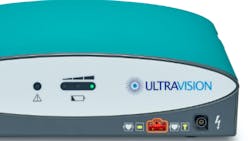Controlling aerosolized particles in laparoscopic surgery is critical to safety of surgical staff
Olympus stated its support of The Joint Commission’s recommended safety actions for managing the hazards of exposure to surgical smoke for healthcare staff in operating rooms.
The primary recommendation is for healthcare organizations to protect their staff by implementing “standard procedures for the removal of surgical smoke and plume.” The safety actions also note, importantly, that exposure to surgical smoke presents a low risk to patients.
Surgical smoke can be hazardous to the health of people working within the surgical suite. Made up of gases and vapors, it is the byproduct of tissue treated with electrical surgical devices, and it contains bioaerosols, viruses and chemicals, some of which are known carcinogens. The hazards include acute exposure to aerosolized viruses that can lead to infection and long-term, chronic exposure that can lead to debilitating illnesses.
Leading healthcare and governmental organizations advocate the use of smoke management devices to reduce the risk of potential exposure to aerosolized contaminants. These include the Association of periOperative Registered Nurses (AORN), the Society of American Gastrointestinal and Endoscopic Surgeons (SAGES), and the National Institute of Occupational Safety and Health (NIOSH). Three U.S. states, Rhode Island, Colorado and Kentucky, have passed laws mandating that hospitals install local exhaust ventilation systems in procedure rooms to control smoke and reduce the risk of staff exposure, and legislation has been introduced in eight other states (Connecticut, Georgia, Illinois, Iowa, New Jersey, Oregon, and Texas), with legislation pending introduction in other states.
According to the literature cited in The Joint Commission’s safety actions to consider, “nanoparticles comprise 80% of surgical smoke and are the real danger of inhaled smoke. These are less than 100 nanometers in size (i.e., 0.1 micron), and when inhaled, enter a person’s blood and lymphatic circulatory systems, and travel to various distant organs.
Olympus offers a suite of solutions for managing surgical smoke, including a means to control bioaerosols. The 510(k)-cleared Ultravision system suppresses the aerosolization of surgical smoke and mist using the highly characterized process of electrostatic precipitation, removing particulates as small as 0.007µm — smaller than any known virus — from the atmosphere. Clinical research has shown that Ultravision prevents the release of surgical smoke into the operating room, reduces patient CO2 exposure and facilitates “low pressure” laparoscopic surgery.
